I snoozed a bit this morning until 6:40am, and the Sara and I quickly got ready to meet Olivia and Sara for breakfast.
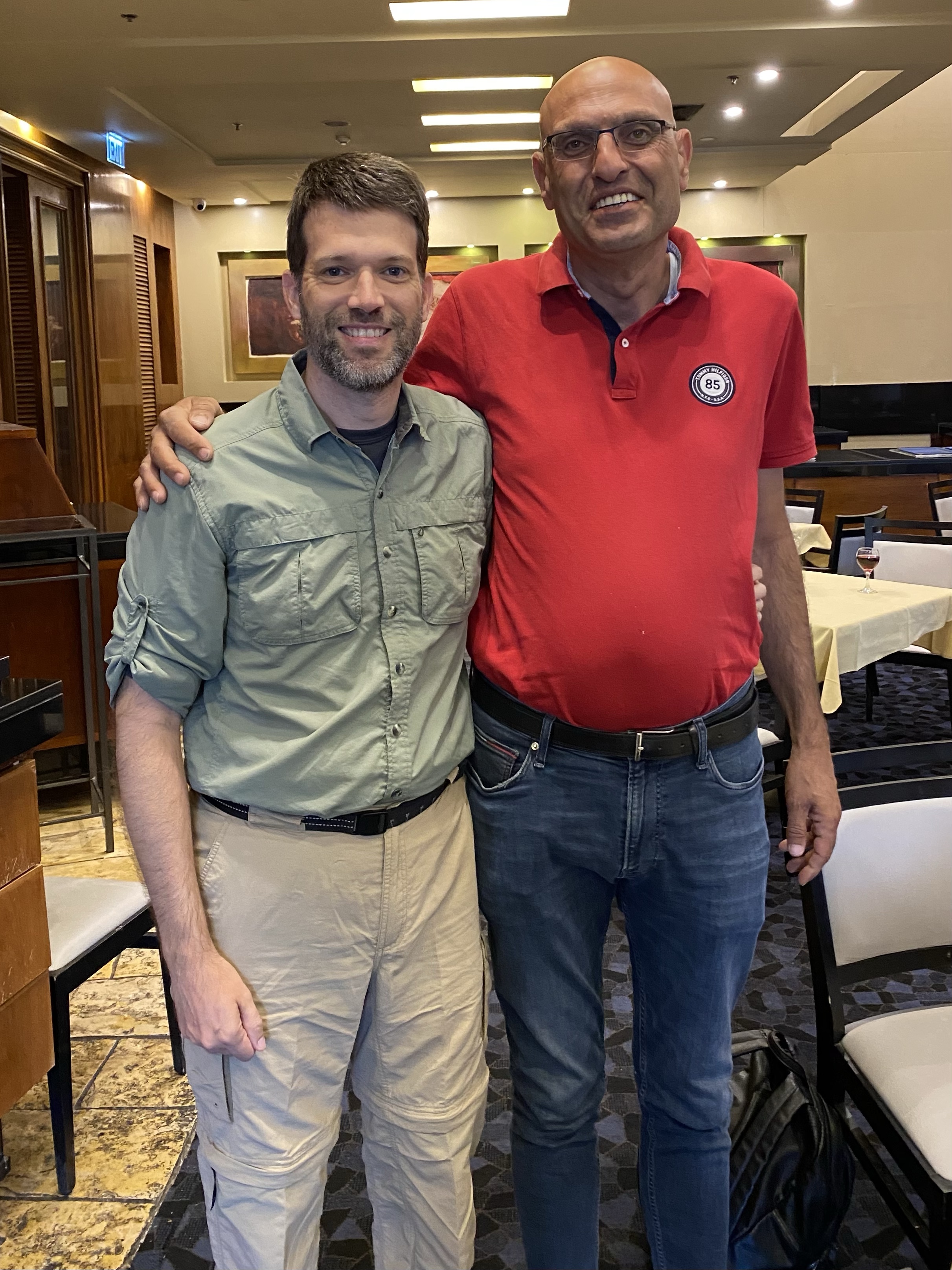
In the dining room I ran into Murad who was our guide on my last trip to Israel. We ran into him again later at the Israel Museum. It was good to see him.
For Breakfast, we had hot food again now that sabbath is over. I combined some eggs with three more cheese danishes. I never eat like this at home!
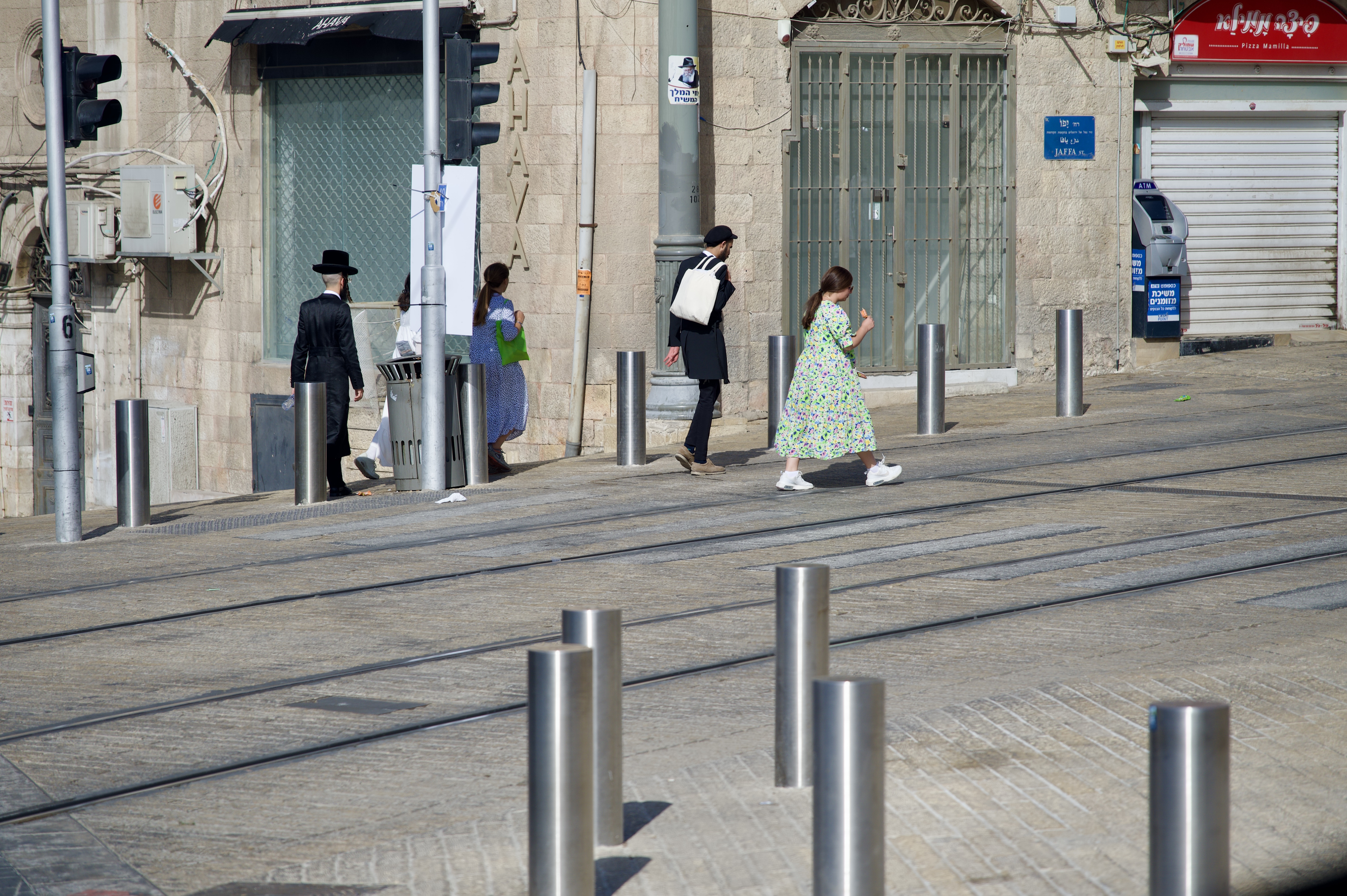
We boarded the bus around 8:15am for a short drive to the modern city of Jerusalem. Today is Shavuot, which is Pentecost of the Feast of Weeks. The streets were pretty quiet because of the holiday, but we could see many Orthodox Jews heading to the Western Wall.
Model of Jerusalem / Israel Museum
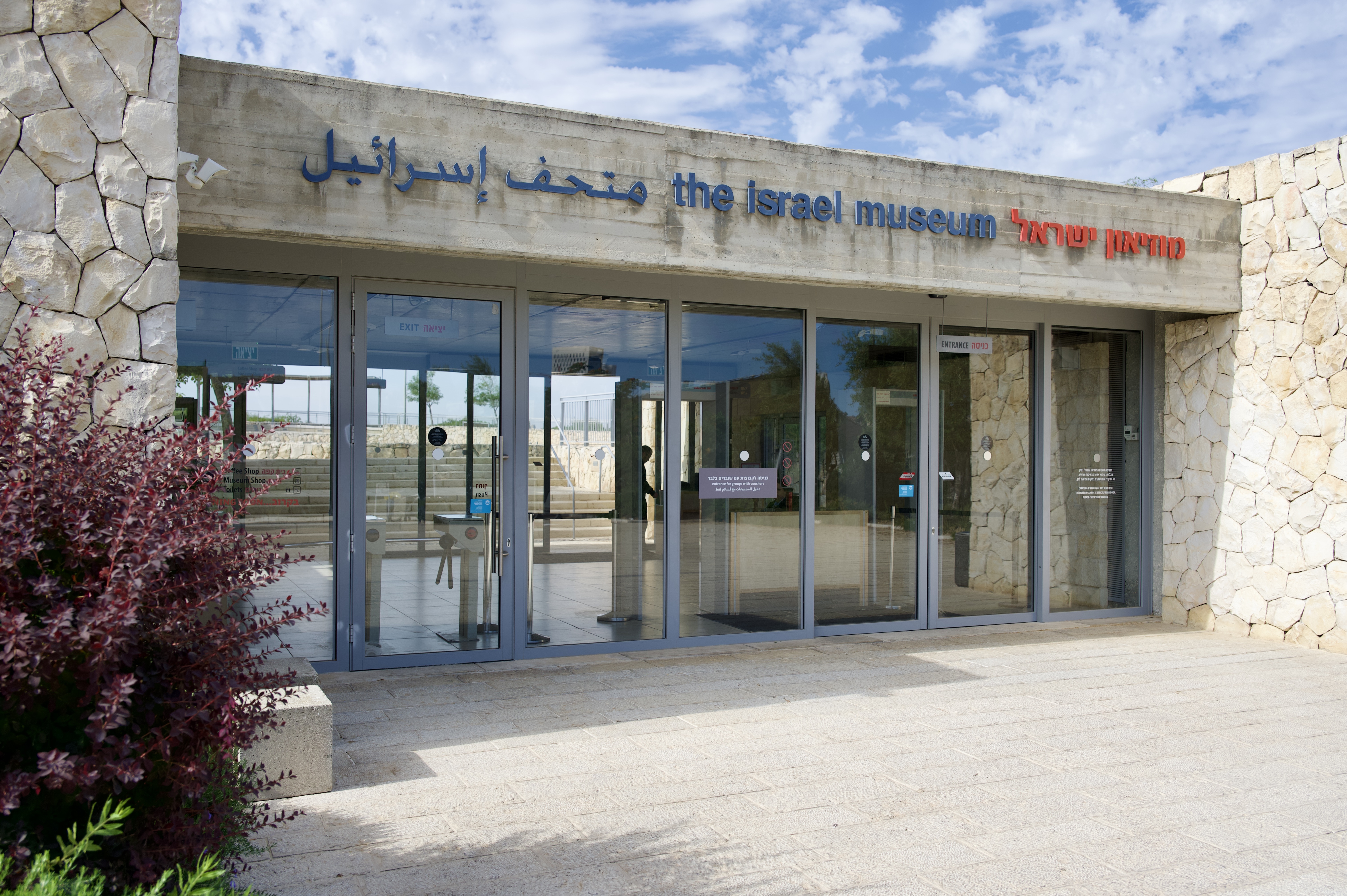
Our first stop today was at the Israel Museum to see the Jerusalem Model and the Shrine of the Book.

The Jerusalem Model is a 1:50 scale model of the city of Jerusalem in the late Second Temple period (~AD 66). The model measures 22,000 sq ft, and was commissioned in 1966 by the banker Hans Kroch, the owner of the Holyland Hotel, in memory of his son, Yaakov, an IDF soldier who was killed in the 1947–1949 Palestine war. It was designed by Israeli historian and geographer Michael Avi-Yonah based on the writings of Flavius Josephus and other historical sources. The model includes a replica of the Herodian Temple. From 1974, Yoram Tsafrir (1938-2015) superintended the Holyland Model of Jerusalem.
In 2006, the model was relocated to the southern edge of the Billy Rose Sculpture Garden at the Israel Museum. In preparation for the move, the model was sawn into 100 pieces and later reassembled. The Holyland Hotel spent $3.5 million on the move.
Ami took us around the entire model and told us about various places within the city. He explained how there were three walls around Jerusalem just before its destruction in AD 70. In the time of Jesus, only two of these walls would have been completed. The outer wall, or third wall, was started by Herod Agrippa I, and finished by his son Herod Agrippa II. This is important in considering where Jesus might have been crucified and buried since we know it was outside the city walls. The following are a few highlights of this magnificent model:
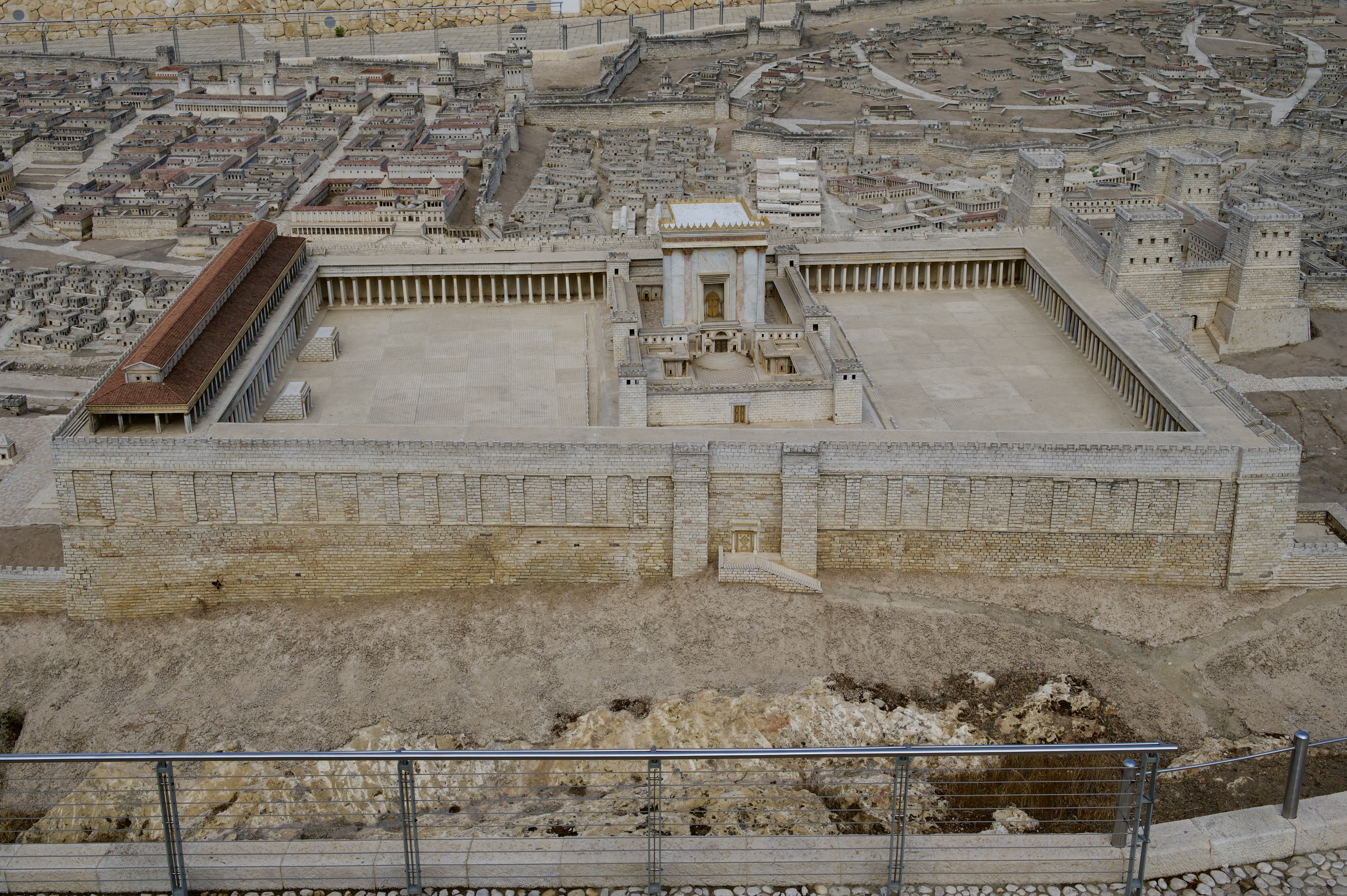
The temple and temple mount on the eastern side of Jerusalem. This would be the view from the Mount of Olives looking over the Kidron valley. Royal Portico on the left with the red rood, the temple with the Most Holy Place is in the middle, and the Fortress Antonia in the upper-right. The gate “Beautiful” is in the front of the temple (Eastern side), and it divided the court of the Gentiles from the Court of the Women. Solomon’s portico would be the colonnade on the eastern side of the temple mount.
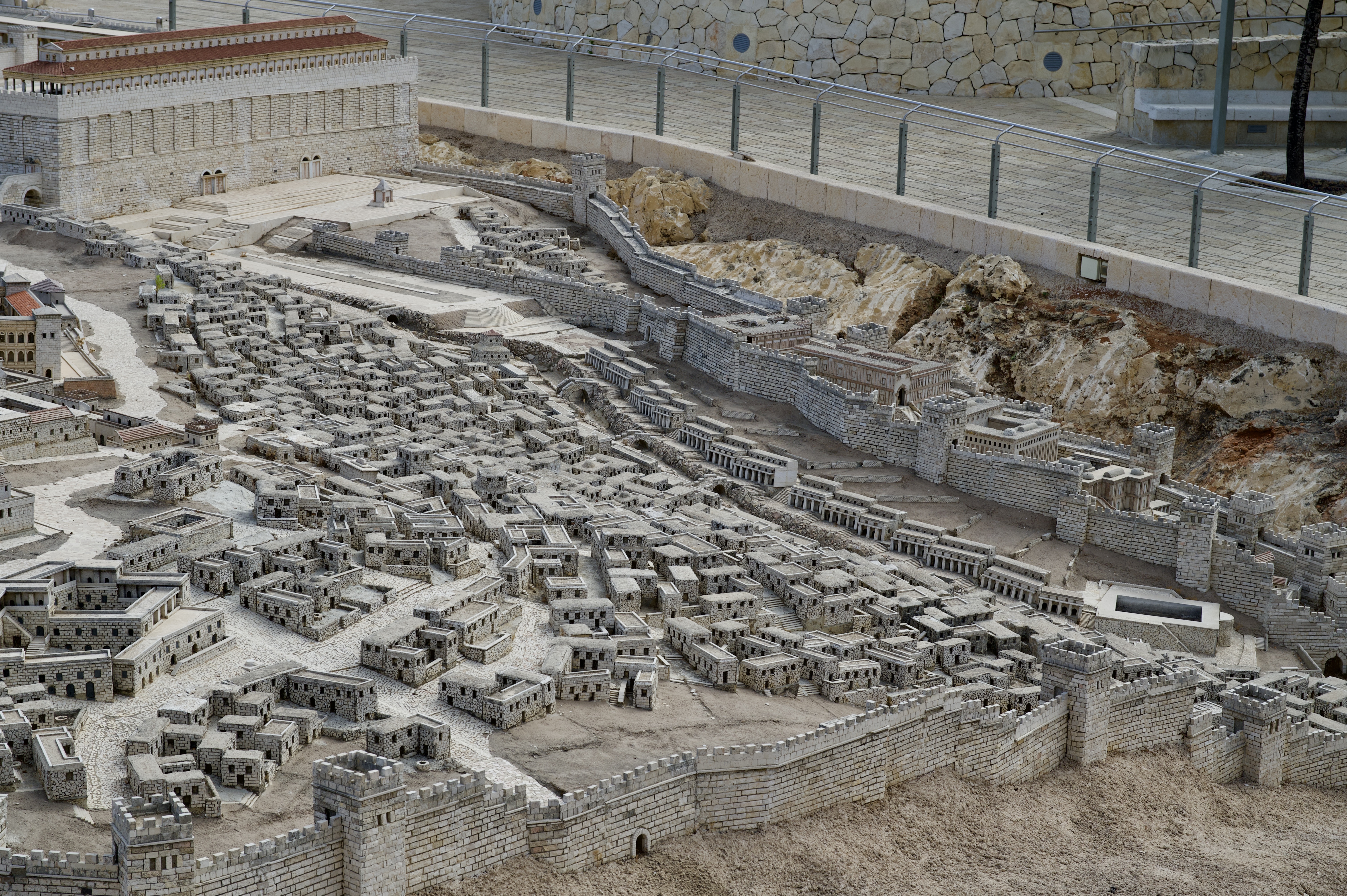
Pool of Siloam (right-hand side) and “Pilgrimage Road” leading up to the temple on the southern side
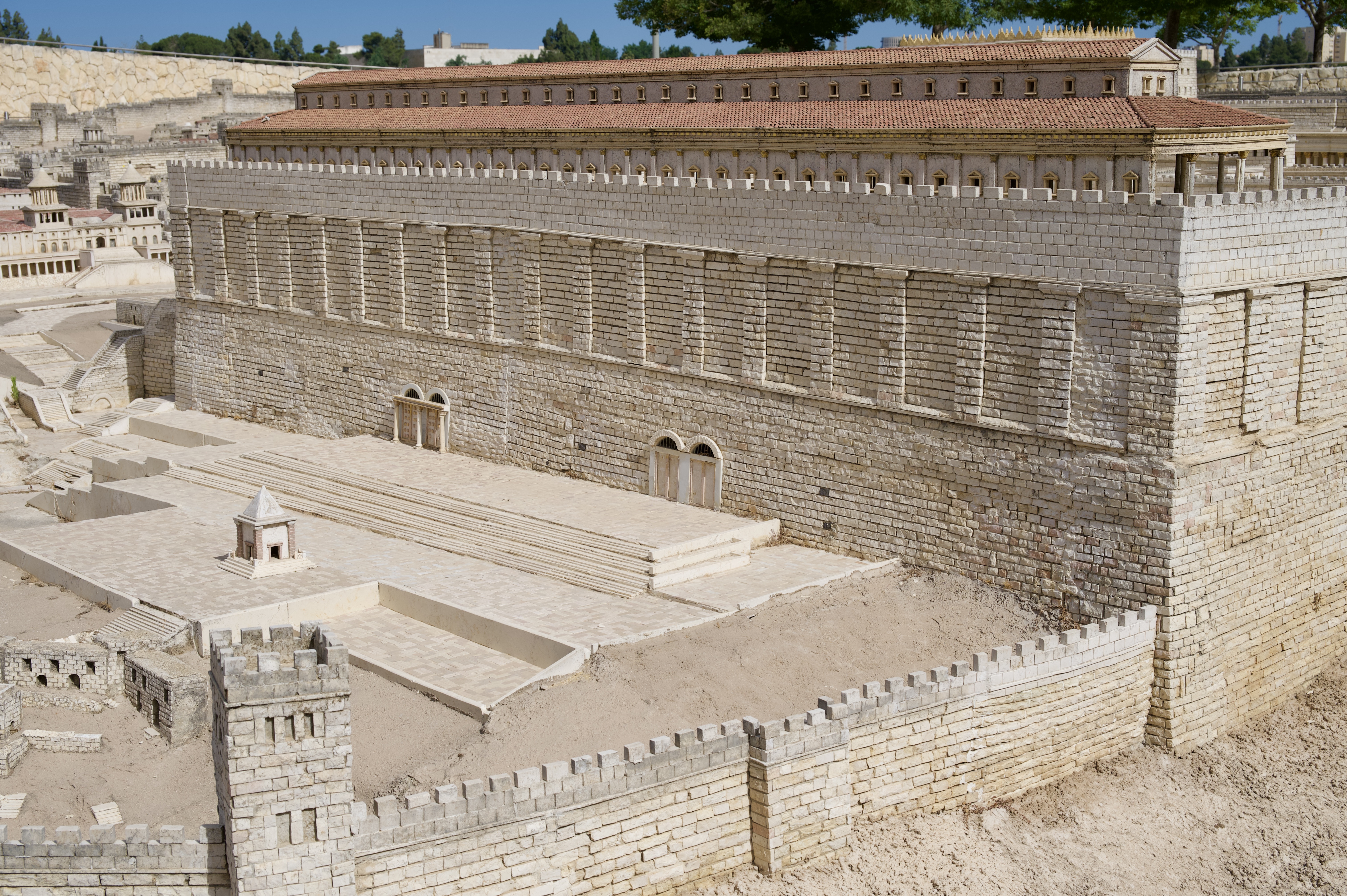
The Southern Steps that were the primary route into the Temple Mount

The western side of the city and temple. The pile of stones just outside the second wall (left-center) is at the location of the modern Church of the Holy Sepulchre.
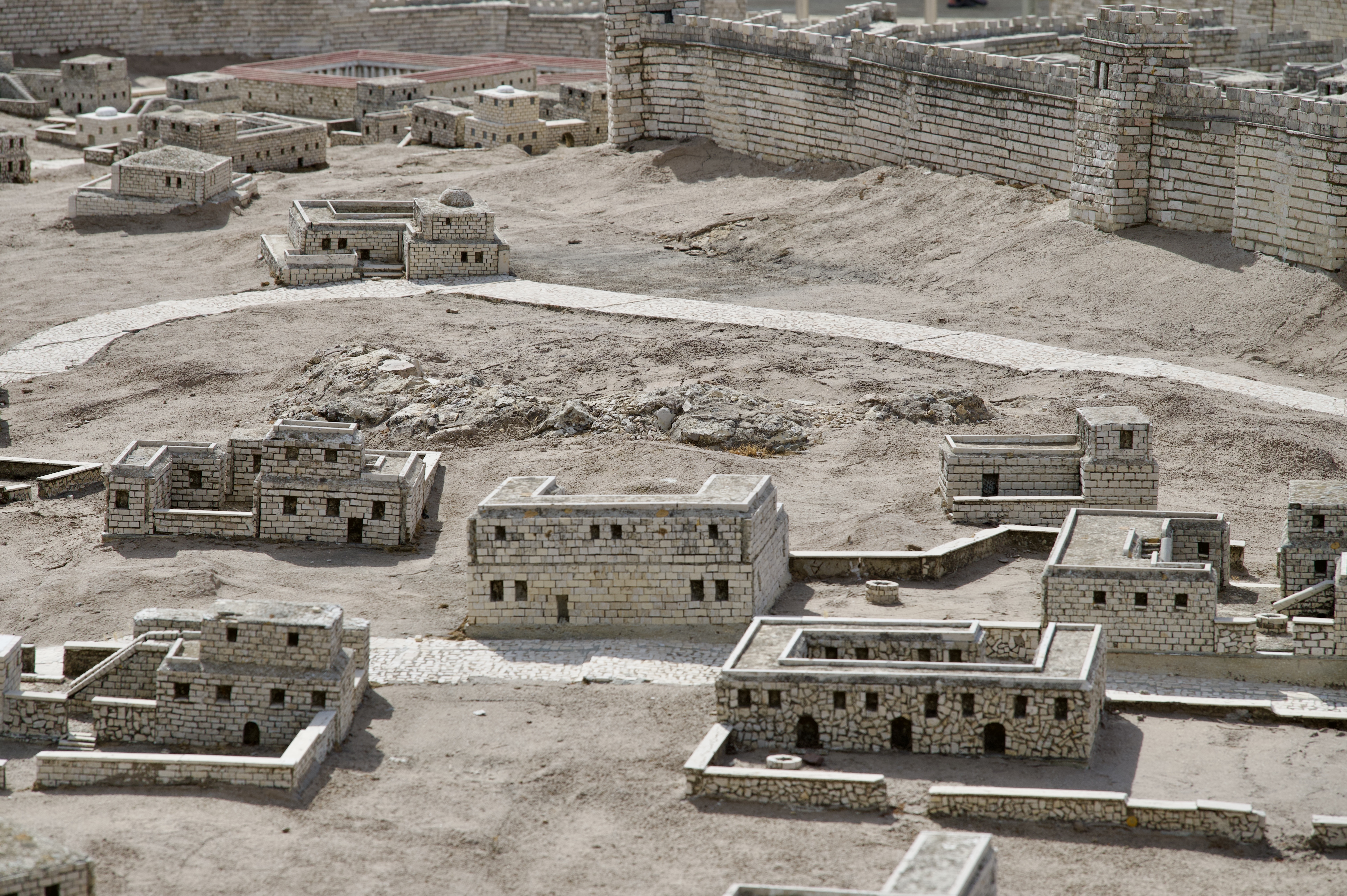
Another pile of rocks representing the location of the Garden Tomb, which is also outside of the second wall. This is northwest of the temple.
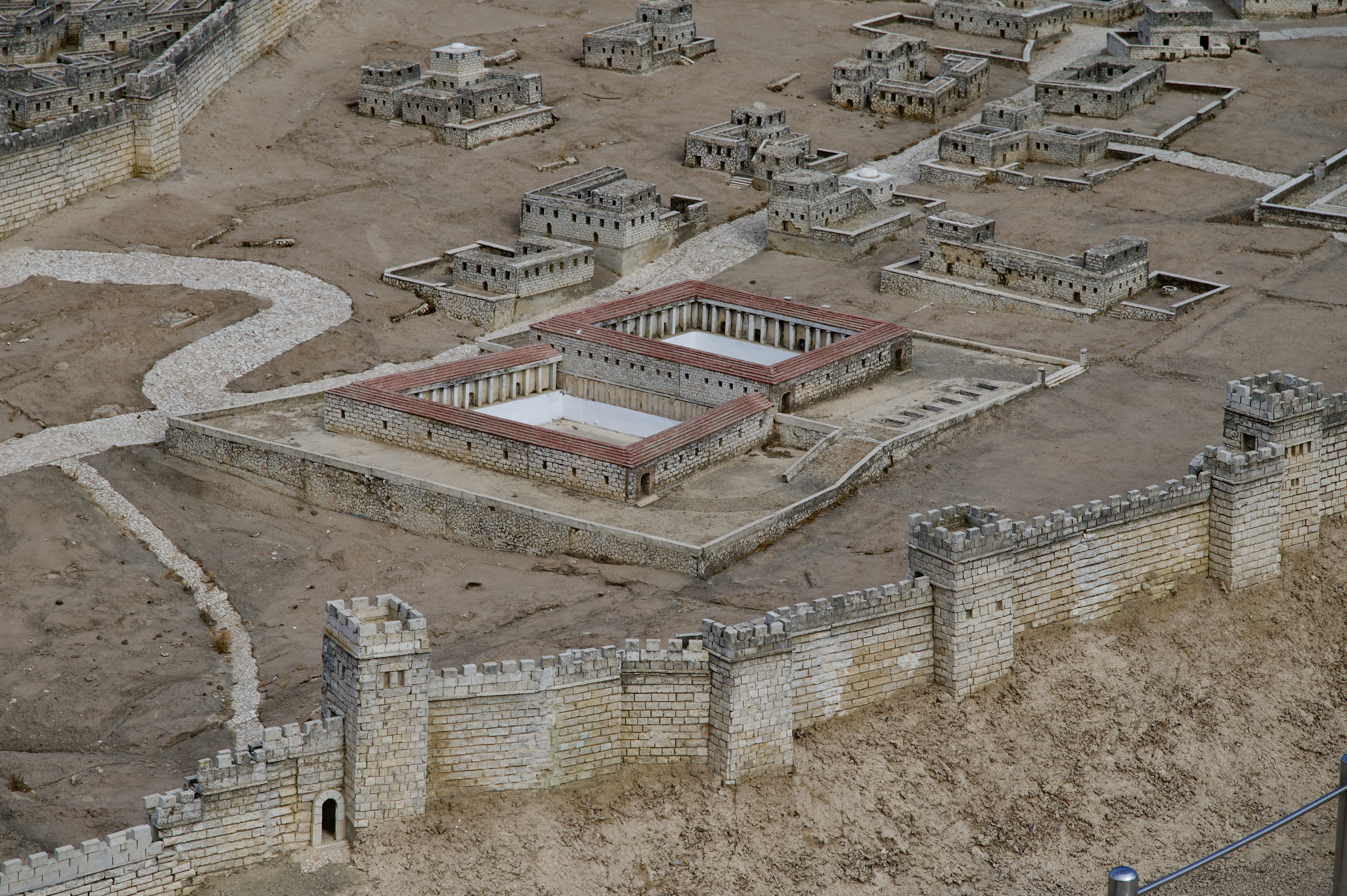
The Pool of Bethesda, just north of the temple.

Western Wall and Robinson’s Arch (note the red arrow that shows where the Western Wall is today). This is the southwest corner of the Temple Mount.

This model is amazing and is such a helpful tool in teaching. I took extensive photographs here in January 2020, but it was overcast and rainy. Today was a nice, sunny day, so I was glad to get a new set of photographs to use in classes and sermons.

From the model, we went to the Scroll of the Book, which is a shrine commemorating the Dead Sea Scrolls. No pictures are allowed inside so I will just address some of the highlights.

The outside of the shrine was designed to look like the top of one of the jars in which the Dead Sea Scrolls were found. Just inside Ami showed us several artifacts that have been discovered from the Essenes in Qumran. This includes:
*A sun dial that they used to keep track of the days so they could keep the Jewish laws
*Pieces of phylactery covers that were found in cave 4. Even today, a phylactery is worn on the forehead between the eyes and contains a copy of the Shema
*Several examples of plates and pottery
*Some of the jars that contained the scroll fragments
Inside the main part of the shrine, we were able to see a fragment of the book of Isaiah that was found in Cave 1. This fragment is of Isaiah 40:3-4
Isaiah 40:3–4 (ESV) 3 A voice cries: “In the wilderness prepare the way of the Lord; make straight in the desert a highway for our God. 4 Every valley shall be lifted up, and every mountain and hill be made low; the uneven ground shall become level, and the rough places a plain.
In the middle of the main room there is a complete facsimile of the scroll of Isaiah that was found at Qumran. The handwriting on these scrolls is unbelievable.
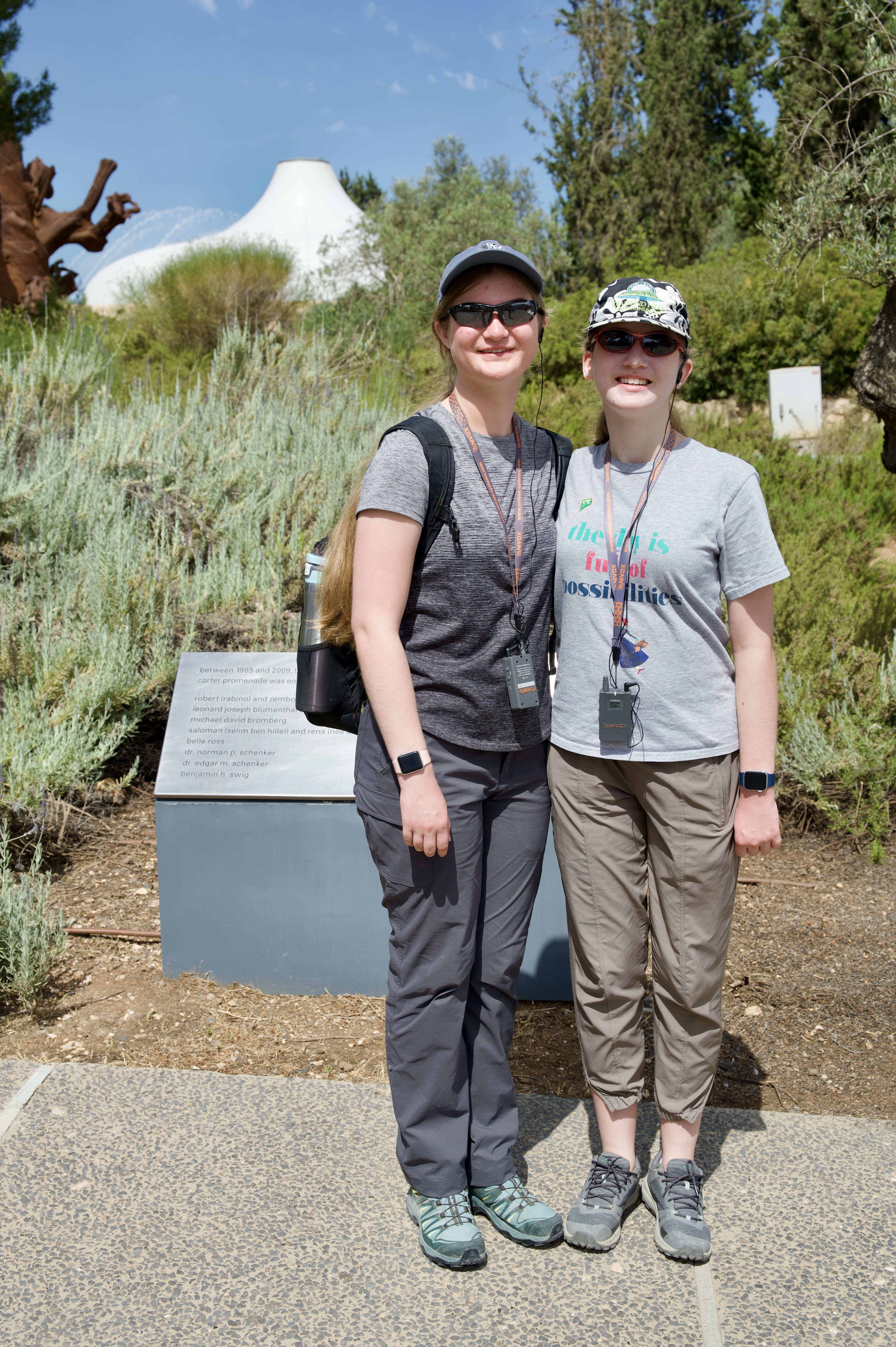
As we were walking out, Ami was talking about the scroll of the temple that was found at Qumran. He mentioned that to him the temple is now in your heart. He also added that if they found the ark of the covenant, he might change his mind. I thought this was funny.
Herodium

After our visit at the museum, we loaded the bus and headed south into the West Bank to Herodium. Herodium was the administrative center for Herod the Great. It is located 7.5 miles south of Jerusalem and 3.1 miles southeast of Bethlehem. The site is a a large, man-made hill that looks like a volcano. It also looks very much like an archaeological Tel, but it was built by Herod the Great between 23 and 15 B.C. The mountain is 2,487 feet above sea level, which is the highest peak in the Judaean wilderness.
On our last trip, they were working on a large stone staircase to the top of the hill and on the restoration of the theatre. Well, Ami told me that today instead of going up to the top of Herodium using the normal trail, we would instead be going up the new staircase after watching a presentation in the Royal Guest Room above the restored theater.

We began by watching a very dramatized short movie and then walking down a level road toward the theater. Quickly the palace at the bottom of the hill came into view. It contained a giant freshwater swimming pool surrounded by columns.

We next arrived at the restored theater and climbed to the top to the remains of the Royal Guest Room. There are a few original stone steps remaining near the top, but most of this has been completely restored. This was a big theme at Herodium today.
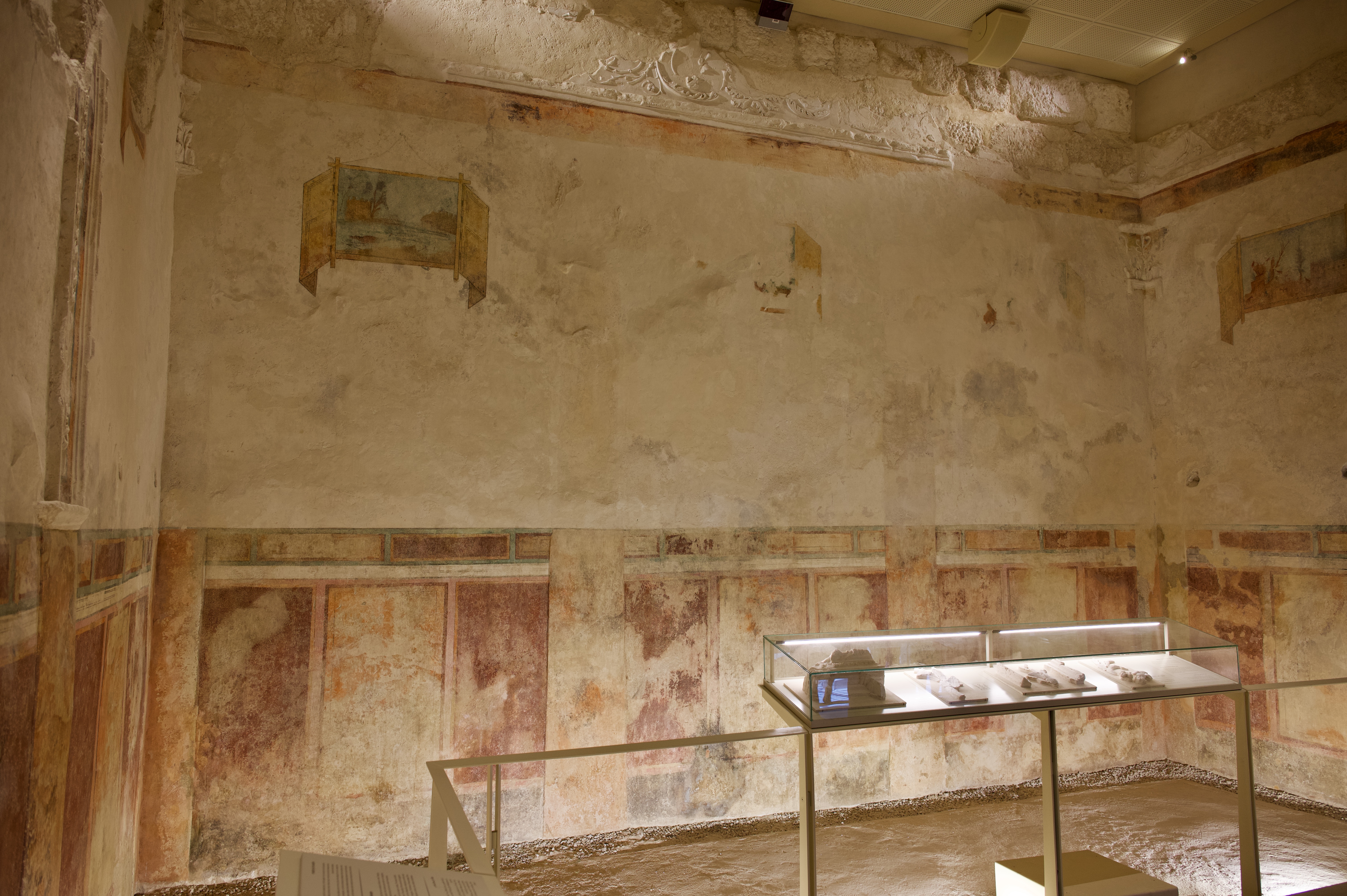
The exterior building for the Royal Guest Room is new, but inside are plaster and frescoes from the original structure. Inside here, we watched a short presentation with a story about this room being built for Marcus Agrippa. I doubt this is based on any reliable source.

Next, we went up to the presumed tomb of Herod the Great that was discovered in 2007. There are no markings or inscriptions, but Josephus said that Herod was buried here, so it makes sense that this very large tomb was for him. This also looked dramatically different than two years ago as they are in the middle of a large restoration process.

After leaving the tomb, we began to climb the steep new steps to the top of the hill. These were in the process of being built during our last trip, and now go all the way to the top. All of this has been restored.

At the top of Herodium was a fortress-palace that is also in the process of being restored. This is confusing to me, because the original excavations are so magnificent, I don’t understand why they would want to taint them with new construction.

Anyway, In the second century AD, Herodium was occupied by the Jews during the second Jewish revolt. They converted Herod’s reception hall into a synagogue. They also built mikvah on top of Herodium, though we couldn’t see them because of the construction.

We then walked around the edge of the top and took in the beautiful views of the Mountains and wilderness of Judea. You can see all the way to the Dead Sea from the top of Herodium.
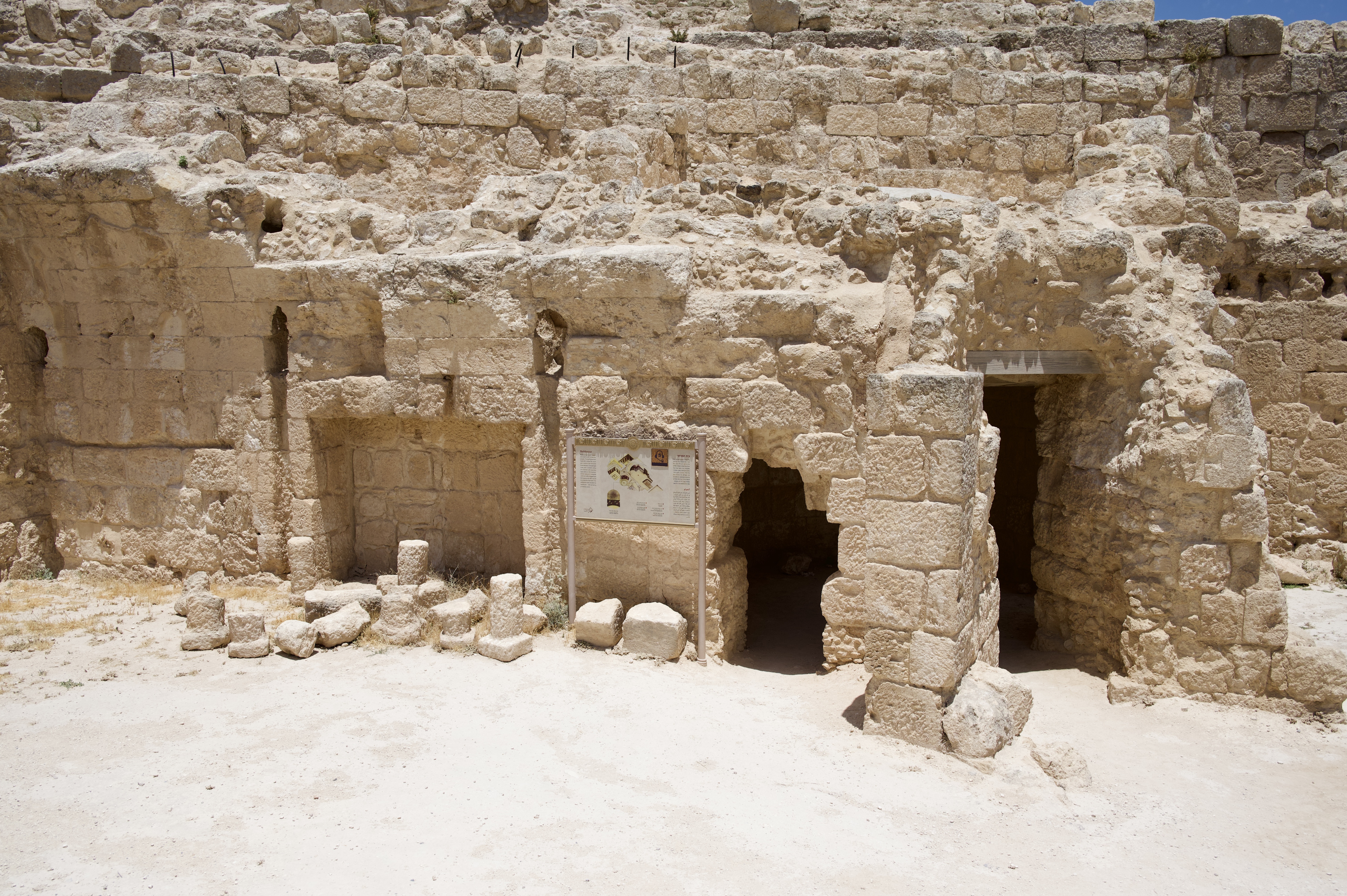
As we came back into the fortress we walked through the bathhouse before walking out through the water system.

What remains of the water system at Herodium was partially built by Herod and partially built by the Jewish zealots in the 2nd revolt.
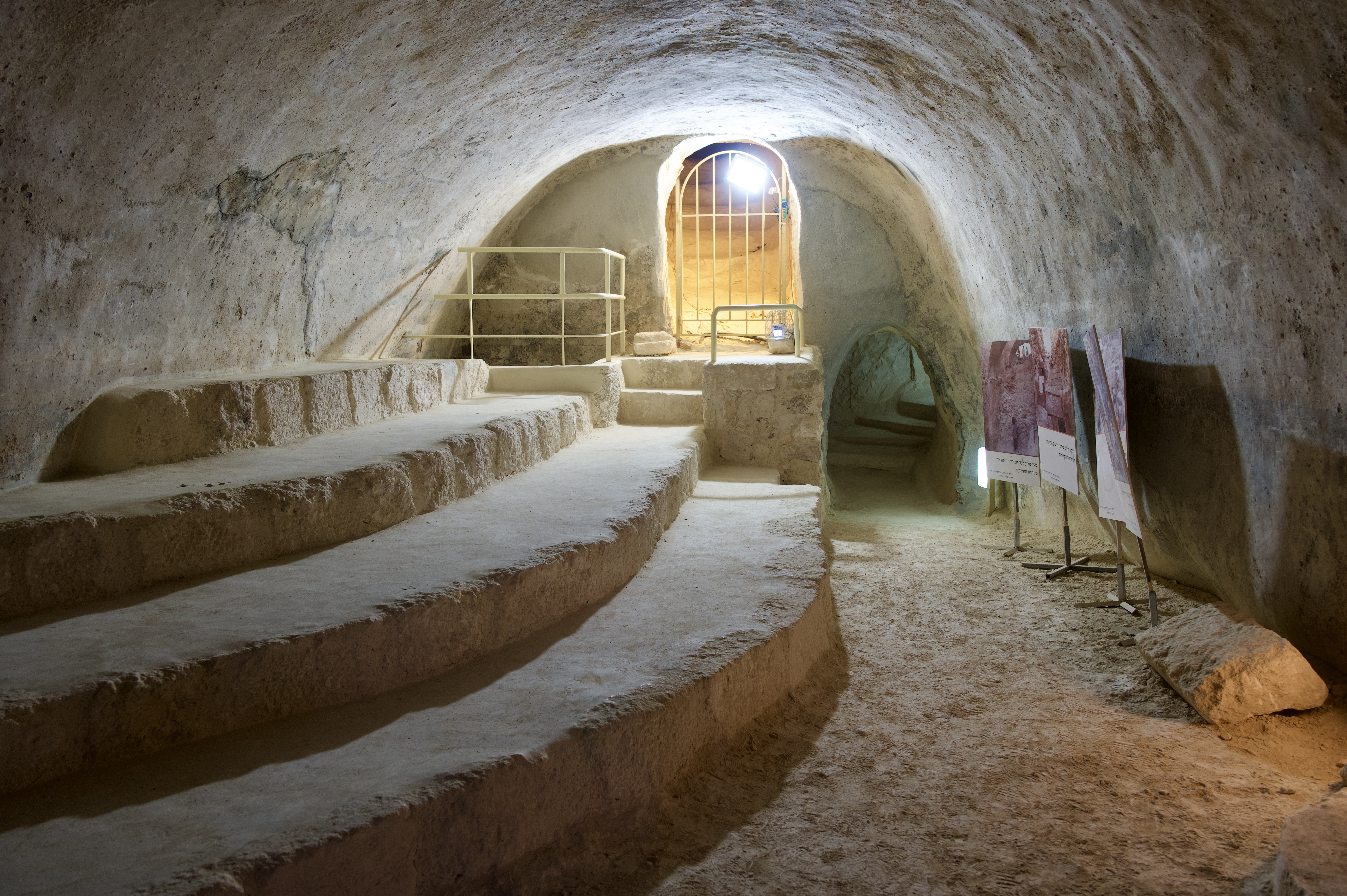
This system was designed to bring in water via aqueducts and store it in large cisterns. Olivia was again very brave and made it all the way through even though she is very claustrophobic.

On a side note, a signet ring (bulla) of Pontius Pilate was found at Herodium. The original is in a museum, but we were able to see a reproduction.

After leaving Herodium, we made short drive to Beit Sahour for lunch, which was at the Ruth Restaurant. We ate here on our last trip as well.

This time we all four had chicken shawarma, and it was quite tasty.
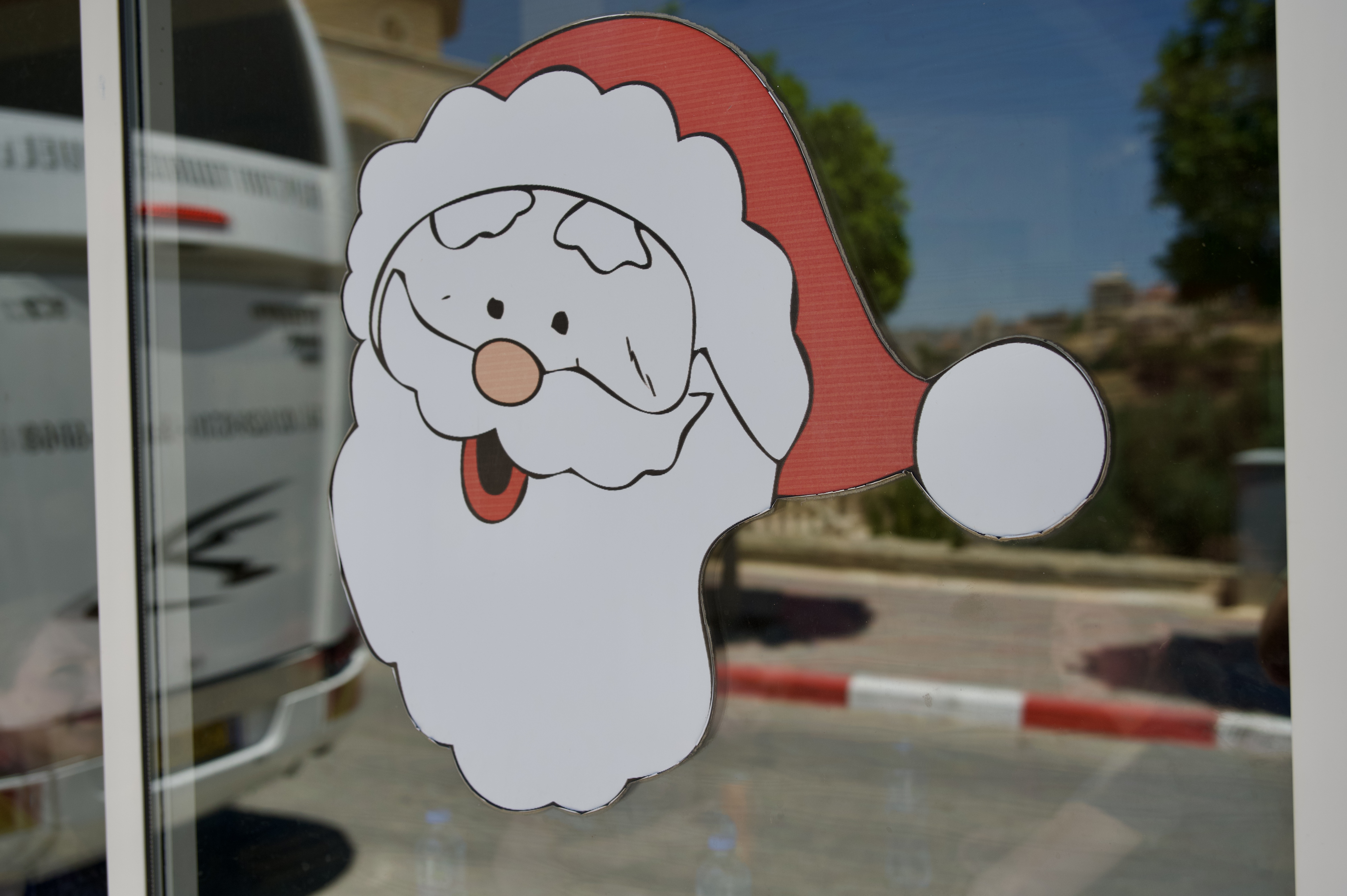
The windows of the restaurant had images from Christmas like a snowman, Christmas tree, bells, and Santa Claus. No idea what that is about.
Shepherd’s Field
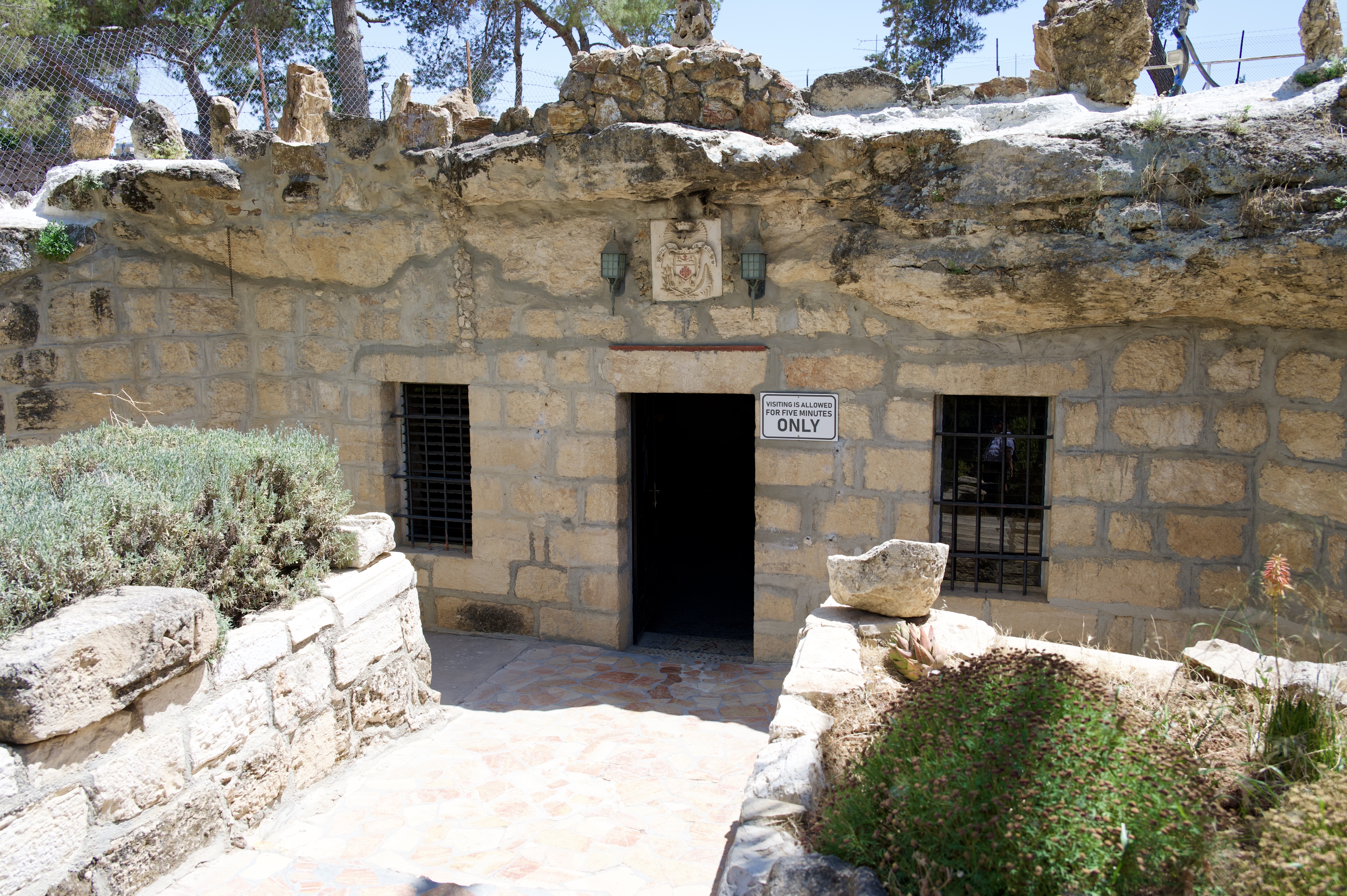
After lunch we walked over this Shepherd’s Field. This is a site that contains a natural cave that is traditionally considered to be the house of the shepherds who received the messages of the birth of Jesus from the angel (Luke 2:8-20). It is just southeast of Bethlehem in the West Bank. While we don’t know where those shepherds lived, this cave is a good example of the type of natural caves in the area, and where Jesus was likely born in nearby Bethlehem. This same site is also traditionally identified Boaz’s field mentioned in Ruth 2:2, where Ruth gleaned grain for herself and Naomi

We were able to have our worship service for the day in this cave, which made it a lot more meaningful. Derek led us in the hymn “Tell Me the Story of Jesus,” and then Daniel gave us a lesson based on the things we have seen on our trip to this point. After communion, I got up and spoke about how even though we don’t know where the shepherds really were, this place reminds me that the message of Jesus came first to lower class people instead of priests or kings in the upper class. Jesus is not just for those with a status here on earth, He is for everyone. After I finished speaking, Bruce said a few words of thanks to the group before offering a prayer.

After finishing our service, we made a quick stop to look at the Shepherd’s Field Chapel at the site that was built in 1953 by the Franciscans.
Shopping in Bethlehem

Our final stop of the day was at Tabash Jewelry and Souvenirs in Bethlehem for shopping. I had been here before and had met the owner, Edward Tabash. This time we were greeted by his son Richard who gave us a brief presentation before turning us loose. I didn’t really buy anything for myself but got both Kate and Sara a “widow’s mite” necklace that contains a real first century Jewish mite. I bought the same thing for Olivia on my first trip and wanted them to have one to remember their first trip to Israel.
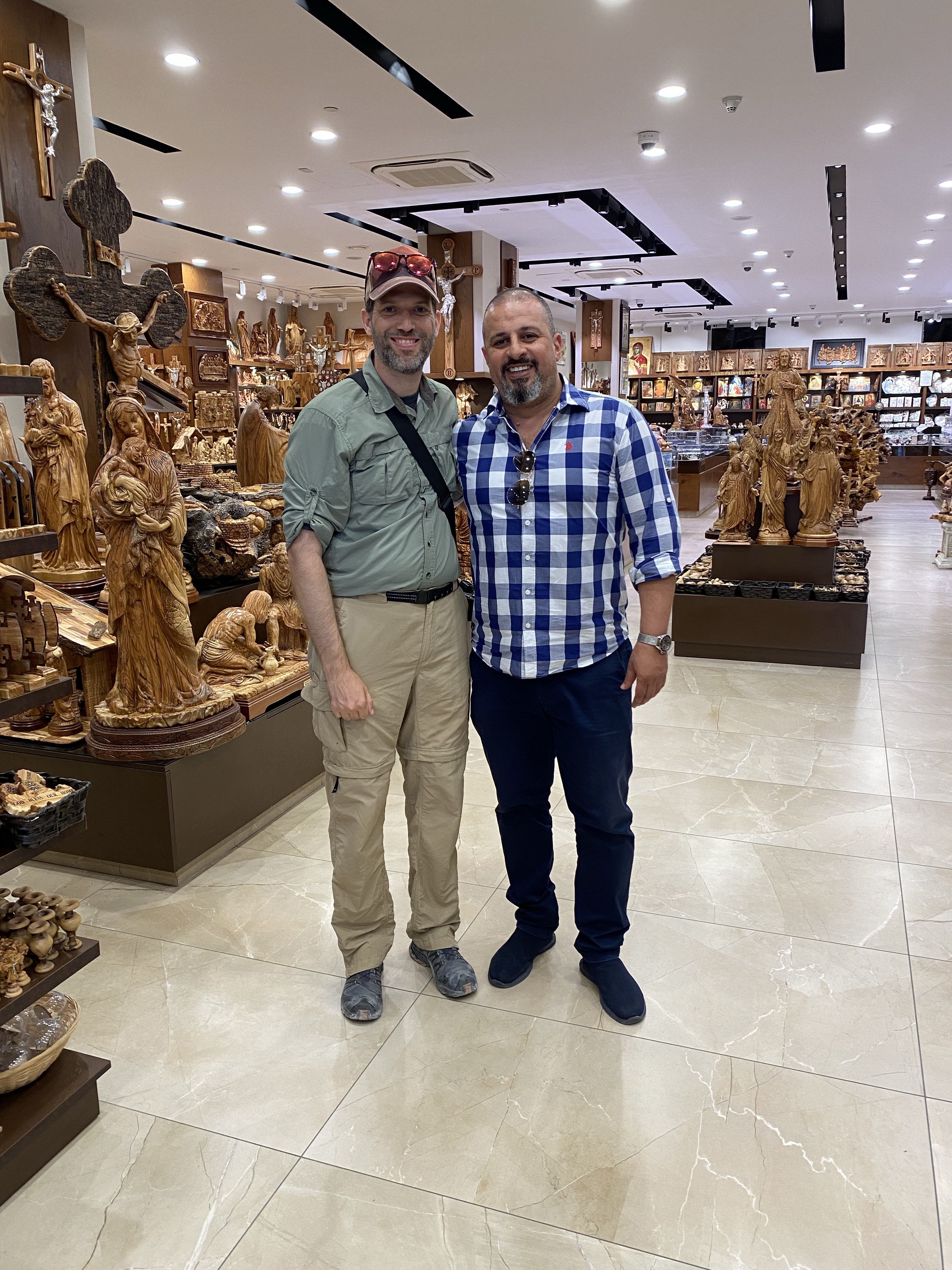
I was able to talk some with Richard and asked about how his dad Edward was doing. Richard said that Edward had been in the hospital for 21 days and will be having open heart surgery next Tuesday. I told him that we would keep him in our prayers. I introduced him to my family and told him that this was their first trip. He very generously gave each of them an olive wood bracelet that contains Jerusalem Crosses.
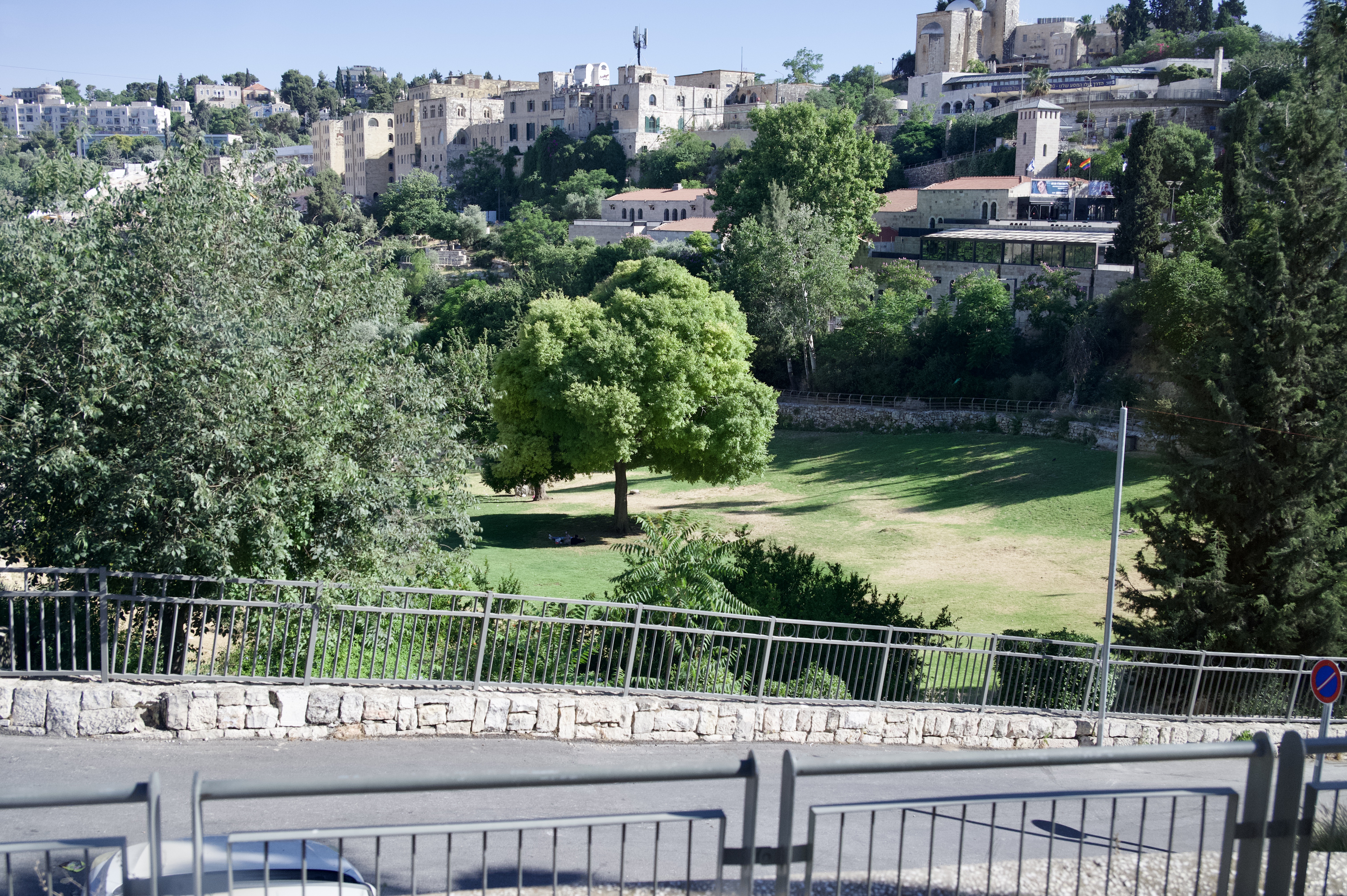
After we finished shopping, it took a while to get back through the checkpoint at the edge of the West Bank, but once we did, we headed straight back to the hotel. The route back gave us a quick glance of the Valley of Gehenna (Hinnom) on the way back. This valley is on the west and southwest side of Jerusalem. Hinnom is first mentioned in the Bible as part of the border between the tribes of Judah and Benjamin (Joshua 15:8). During the late First Temple period, it was the site of the Topheth, where some of the kings of Judah had sacrificed their children by fire (Jeremiah 7:31). After this, it was cursed by the prophet Jeremiah (Jeremiah 19:2–6).
Old City of Jerusalem
Back at the hotel, we spent some time cleaning up and packing before heading to dinner. After dinner, we did something a bit different.
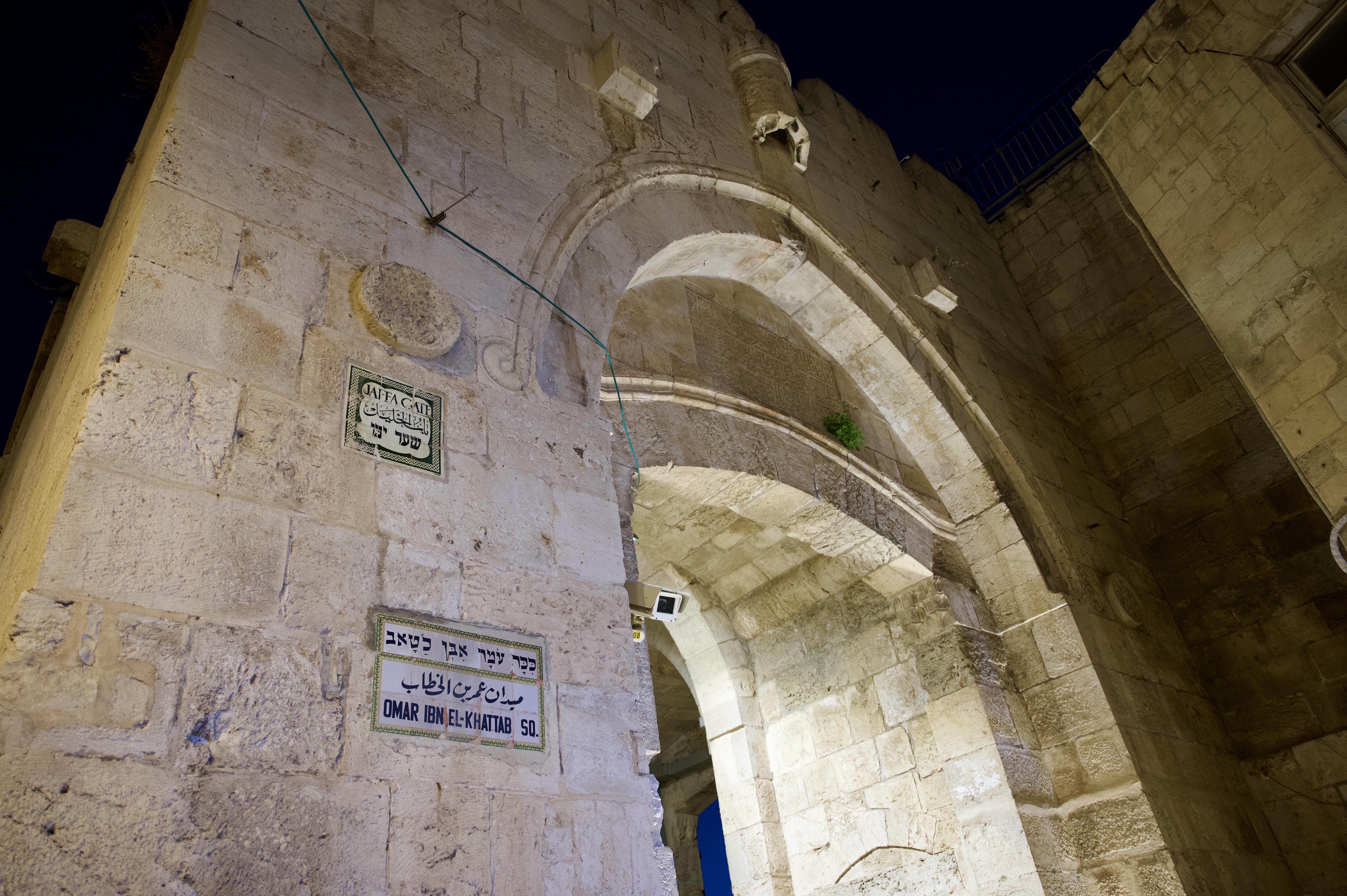
We walked down to the Old City, and went from Herod’s Gate all the way around to Jaffa Gate. Near Jaffa Gate, many orthodox Jewish families were leaving the city as the Pentecost holiday was just ending.
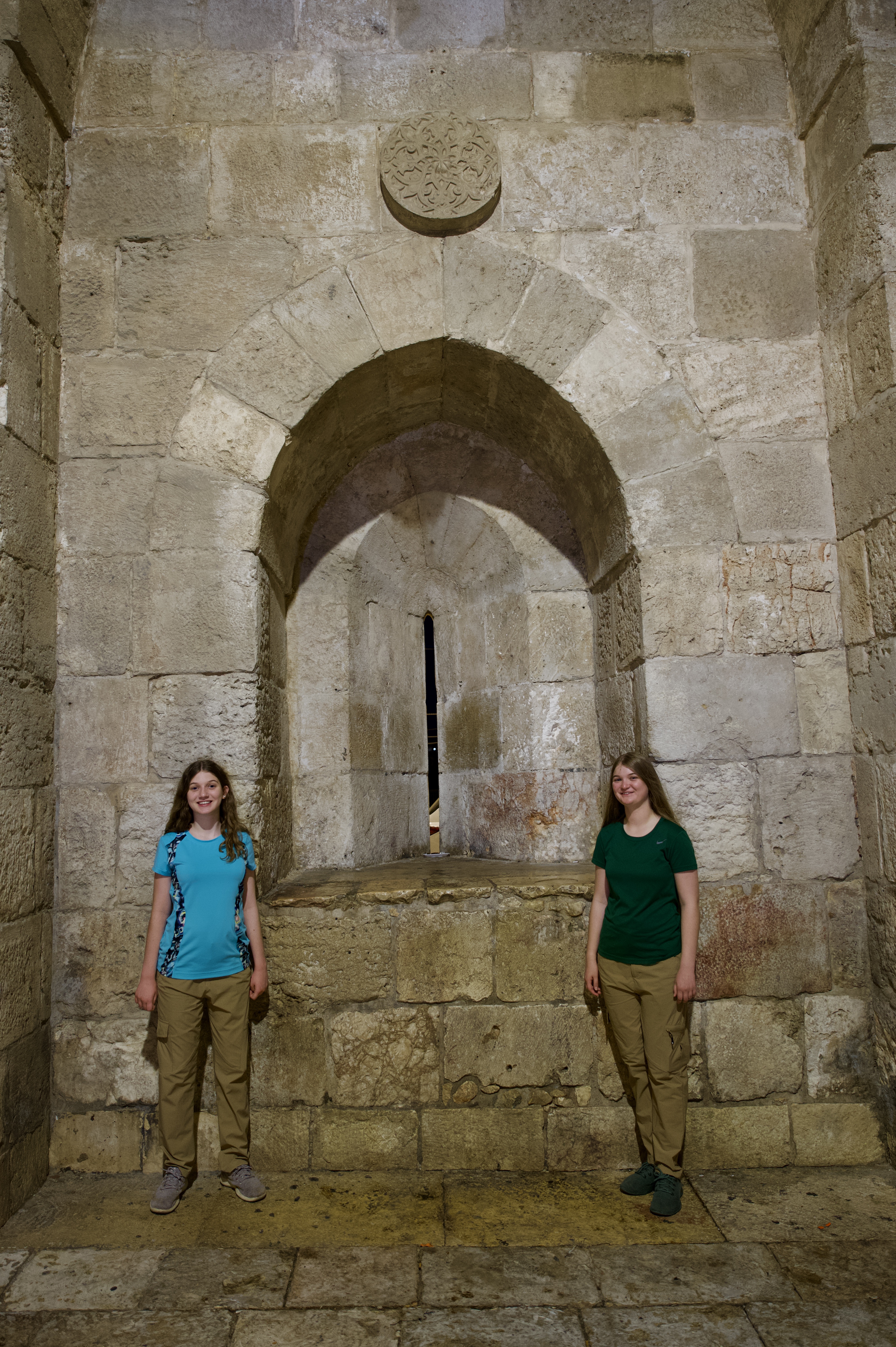
We went in through the Jaffa Gate and walked around the Jewish Quarter for a few minutes before heading back to our hotel. This is our last night in Jerusalem, and late tomorrow night we hopefully board our flight back to the US. Before our flight we are driving back up to the north to some of the sites we missed on day one when we missed our flight. This includes two of my favorites, Caesarea Maritime and Tel Megiddo. Should be a great last day.
